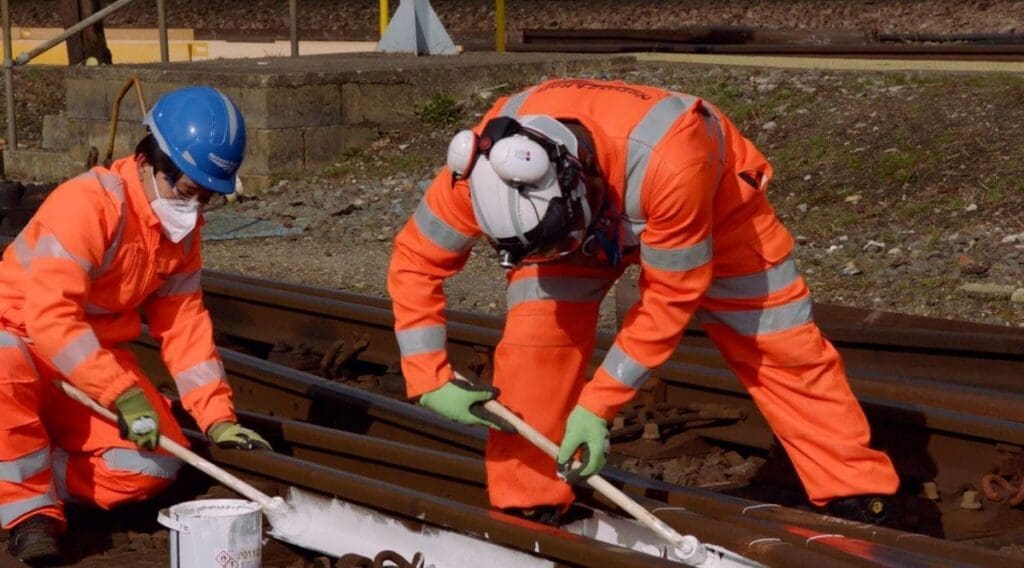Around 1,500 litres of white paint will be applied to railway tracks in preparation for hot weather.

Hundreds of Network Rail workers will be deployed across Britain ahead of the summer weather.
White paint helps reflect the sun’s rays and reduce overheating.
Enjoy more Rail Express Magazine reading every month.
Click here to subscribe & save.
Rails in direct sunshine can be as much as 20C hotter than the air temperature and, as they are made from steel, rails can expand as they get warmer.
This can result in buckling where they begin to curve, making it unsafe to run trains over them.
Buckled rails caused by hot weather led to a total of more than 350,000 minutes of delays to train services last year.
Painting a rail white can keep it 5-10C cooler than one left unpainted, according to Network Rail.
Alongside painting rails, Network Rail also collaborates with specialist weather forecasters and local weather stations to make plans to reduce the chances of buckling.
When very hot weather is forecast, train speed restrictions are introduced to reduce the force on rails.
Engineers also check track stability each winter and strengthen weak sections.
Network Rail’s industry weather response director Lisa Angus said: “Soaring temperatures on the railway can put a huge amount of pressure on our infrastructure.
“With extreme weather events becoming more frequent we’re working hard to keep passengers moving through the summer months ahead.
“Last year we announced plans to invest £2.8 billion over the next five years to make the network more resilient to the issues caused by climate change, helping to keep our railway safe, improve performance and minimise disruption.”




